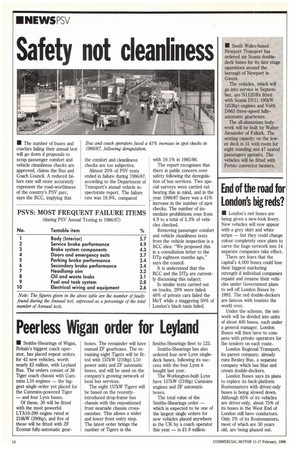Safety not cleanliness
Page 24

If you've noticed an error in this article please click here to report it so we can fix it.
• The number of buses and coaches failing their annual test will go down if proposals to scrap passenger comfort and vehicle cleanliness checks are approved, claims the Bus and Coach Council. A reduced failure rate will more accurately represent the road-worthiness of the country's PSV parc, says the BCC, implying that the comfort and cleanliness checks are too subjective.
Almost 20% of PSV tests ended in failure during 1986/87, according to the Department of Transport's annual vehicle inspectorate report. The failure rate was 19.9%, compared The report recognises that there is public concern over safety following the deregulation of bus services. Two special surveys were carried out bearing this in mind, and in the year 1986/87 there was a 41% increase in the number of spot checks. The number of immediate prohibitions rose from 4.9 to a total of 5.3% of vehicles checked.
Removing passenger comfort and vehicle cleanliness tests from the vehicle inspection is a BCC idea: "We proposed this in a consultation letter to the Dip eighteen months ago," says the council.
It is understood that the BCC and the DTp are currently discussing this subject.
In similar tests carried out on trucks, 29% were failed: 40% of private cars failed the MoT while a staggering 50% of London's black taxis failed.




































































































